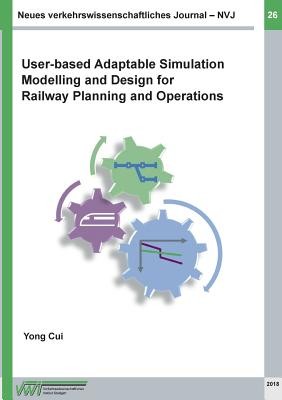
- We will send in 10–14 business days.
- Author: Yong Cui
- Publisher: Books on Demand
- Year: 2018
- Pages: 196
- ISBN-10: 3752855207
- ISBN-13: 9783752855203
- Format: 14.8 x 21 x 1.1 cm, minkšti viršeliai
- Language: English
- SAVE -10% with code: EXTRA
Reviews
Description
Simulation methods are widely-used in the field of railway planning and operations. However, the various tools are all lacking with respect to the standards they utilise as well as their published interfaces. For an end-user, the basic mechanism and the assumptions built into a simulation tool are unknown, which means that the true potential of these software tools is limited. One of the most critical issues is the lack of the ability of users to define a sophisticated workflow, integrated in several rounds of simulation with adjustable parameters and settings. This book develops and describes a user-based, customisable platform. As the preconditions of the platform, the design aspects for modelling the components of a railway system and building the workflow of railway simulation are elaborated in detail. Based on the model and the workflow, an integrated simulation platform with open interfaces is developed. Users and researchers gain the ability to rapidly develop their own algorithms, supported by the tailored simulation process in a flexible manner. The productivity of using simulation tools for further evaluation and optimisation will be significantly improved through the user-adaptable open interfaces.
EXTRA 10 % discount with code: EXTRA
The promotion ends in 21d.18:12:44
The discount code is valid when purchasing from 10 €. Discounts do not stack.
- Author: Yong Cui
- Publisher: Books on Demand
- Year: 2018
- Pages: 196
- ISBN-10: 3752855207
- ISBN-13: 9783752855203
- Format: 14.8 x 21 x 1.1 cm, minkšti viršeliai
- Language: English English
Simulation methods are widely-used in the field of railway planning and operations. However, the various tools are all lacking with respect to the standards they utilise as well as their published interfaces. For an end-user, the basic mechanism and the assumptions built into a simulation tool are unknown, which means that the true potential of these software tools is limited. One of the most critical issues is the lack of the ability of users to define a sophisticated workflow, integrated in several rounds of simulation with adjustable parameters and settings. This book develops and describes a user-based, customisable platform. As the preconditions of the platform, the design aspects for modelling the components of a railway system and building the workflow of railway simulation are elaborated in detail. Based on the model and the workflow, an integrated simulation platform with open interfaces is developed. Users and researchers gain the ability to rapidly develop their own algorithms, supported by the tailored simulation process in a flexible manner. The productivity of using simulation tools for further evaluation and optimisation will be significantly improved through the user-adaptable open interfaces.


Reviews